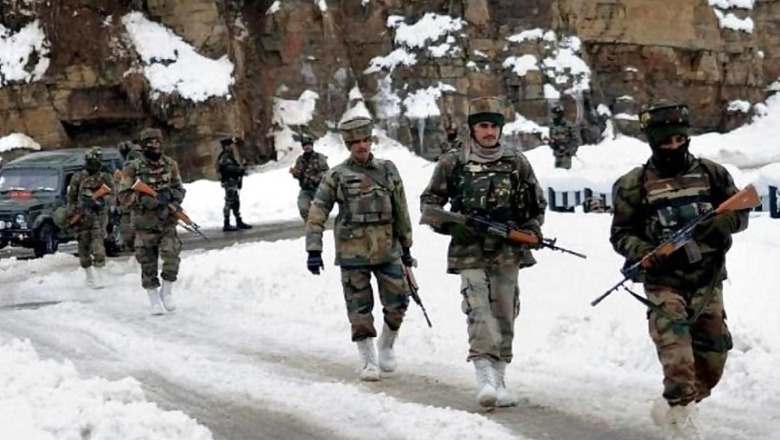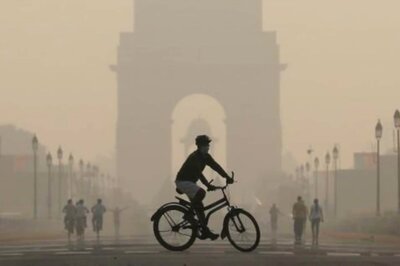
views
The waiting game is on in the treacherous heights of Eastern Ladakh. Every day trucks carrying rations, warm clothing, kerosene, medicines and every item of daily need you can think of are making their way up to the area of conflict. This is where Indian and Chinese troops have been involved in a tense face off for the last 12 weeks. This is where 40,000 Indian troops are preparing to spend the winter when temperatures will go down to minus 20 degrees Celsius.
After 12 weeks, four rounds of Army Cdr level talks, two rounds of WMCC meetings and one virtual meet between Special Representatives of India and China, Ajit Doval and Wang Yi, one question remains: For how long will the standoff last?
Speaking exclusively to CNN-New18, Lt Gen YK Joshi, GOC-in-C, Northern Command, says troops will continue to be deployed on ground till status quo ante is achieved, that is, till the Chinese go back to their pre mid-April positions.
“What I can tell you in simple words is that we shall continue all efforts to restore the status quo ante along the LAC. I believe the negotiations and process of this engagement and the commitment of both sides to adhere to the laid down methodology would dictate the timeline of the standoff.”
The process of this engagement is currently underway in Eastern Ladakh. While the Chinese and Indians have stepped back in Galwan Valley and Hot Springs as agreed upon, the other two friction points —Pangong Tso and PP17 Gogra — have seen minimal progress.
When asked about the situation on ground, Lt Gen Joshi, the man in-charge of India’s northern borders, said, “There is a method to every process. And our ongoing military engagement with the PLA to diffuse the situation is no different. There are certain commitments required from the two sides which are essential for the process to move ahead positively. There are certain factors though such as territorial integrity of the country that are not negotiable. While we are investing sincerely in this ongoing endeavour to bring about peace along the border, we also remain prepared at all times for any eventuality.”
Lt Gen Joshi has spent half his professional life in the cold desert of Ladakh. He has Commanded an Infantry Battalion, an infantry brigade and an infantry division here. He was the Commander of the Leh-based 14 Corps before taking over as the head of the Northern Command. Lt Gen Joshi speaks Chinese and was the defense attache in Beijing from 2006 to 2009.
A Kargil War Hero, Lt Gen Joshi spoke to CNN-NEW18 ahead of the 21st Kargil Vijay Diwas. When asked if Kargil was a bigger challenge than the current standoff at the LAC, he said, “It’s like comparing apples with oranges. The challenge of Kargil and the present situation are in a completely different domain. Yes, Point 4875 was a challenge then. In the given circumstances, the LAC in Ladakh is a challenge today. As an organisation, we concluded the situation in 1999 to our satisfaction and so will be the case in Ladakh.”
There are questions that have been raised about how the Chinese PLA moved in troops and arms into the Galwan Valley, Hot Springs, Gogra and Pangong Tso, taking the Indian Army by surprise. There are also questions on where exactly the process of dis-engagement is headed given that the Chinese have reportedly dug in their heels at Pangong Tso and PP17 Gogra.
When asked how he saw the next six months pan out for him, Lt Gen Joshi said, “We are living in challenging times and the situation will continue to be so. We will do whatever it takes to maintain the territorial integrity and sovereignty of the nation. The faith and trust the nation has reposed on us has to be honoured and hence we shall stand steadfast in efforts to do the same.”
These come as reassuring words from the man who is on the hot seat.




















Comments
0 comment